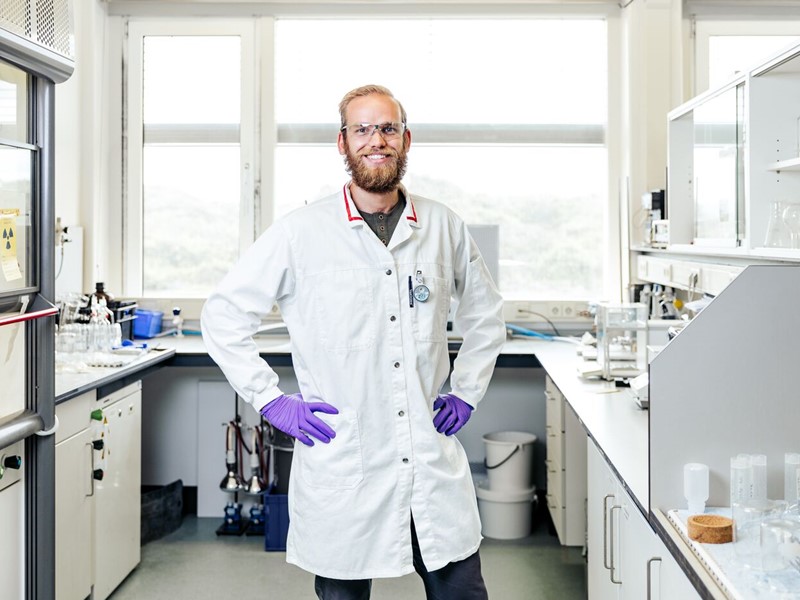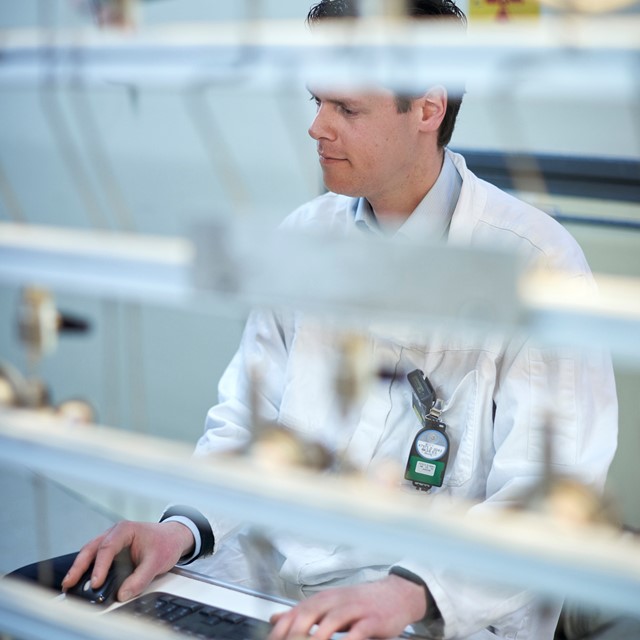Radiation protection
Radiation protection
Radioactivity is everywhere. Everyone is exposed to natural radioactivity: from space (cosmic radiation) and the Earth. If you fly in a plane or hike or camp in the mountains. However, the radiation is minimal. You can also be exposed to radiation when using radioactive materials, for example in a hospital, as a patient or employee, or in a nuclear power plant. When we talk about radiation, we mean radiation with certain energy, i.e. ionising radiation. That includes X-rays.

Measuring is knowing
Radioactivity, ionising radiation, is invisible but it can be easily and accurately measured. This enables us to protect professionals working with radioactivity and the rest of the population against the undesirable effects of ionising radiation. NRG contributes to this by conducting research into new types of dosimeters which measure the amount of radiation to which the wearer of the meter is exposed. There are now dosimeters on which the exposure can immediately be read. NRG is studying the functionality and reliability of these new dosimeters.
A special group of employees are doctors in hospitals who work with X-rays. During a treatment, they must minimise their exposure to the radiation. This is particularly important for the eye lens which can be damaged by too much radiation. Headed by NRG, a national guideline has therefore been drawn up for the use of a dosimeter which has been specially developed for the eye lens. This enables the doctor to check that they have taken the appropriate preventive measures.
More about:
Contact

Geert-Jan de Haas
Programme-manager Nuclear Research
Medical isotopes for better health care
Medical isotopes are indispensable today. They can be vitally important in the treatment of cancer and other diseases. The radioactive radiation kills cancer cells. When developing the treatment, it is important to minimise the effects on healthy tissue surrounding the tumour. NRG conducts research into models which can calculate the effects of radiation on that tissue. Based on that knowledge, it will be possible to further reduce the consequences of the treatment in the future.

Be prepared
Despite all the preventive measures, it is impossible to exclude the possibility of radioactivity getting into the environment. This might involve huge quantities like Fukushima and Chernobyl or a small leak. Big or small: it is important to be prepared. For the government, it is important to know how (fast) the radioactivity spreads and how it impacts on people and the planet. Computer models have therefore been developed with which discharges of radioactivity in rivers and coastal waters can be simulated. The models are becoming increasingly refined with new knowledge about the characteristics of radioactive materials in water: how much is absorbed by fish and plants, for example, and how much remains in the water? Together with Belgian colleagues, among others, the results of simulations are compared and where necessary the models are adapted.
Radon
The soil and building materials 'exhale' natural radioactivity. Everyone has probably heard of radon in the crawl space of houses. In certain concentrations, radon can be harmful to health. NRG supports the development of new measuring techniques which can measure the amount of radioactivity that is 'exhaled' faster and more accurately. Together with the building industry, we study how the amount of radioactivity from building materials can be further reduced.
More information about radiation protection
Want to know more about radiation protection? Then you are at the right place at NRG. Our experts are ready to answer all your questions.
